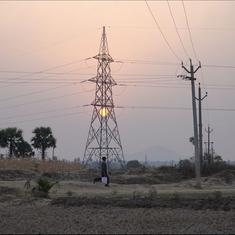As Praveen Kumar tells it, the Films Division documentary The Sax in the City is the result of “a childhood fantasy come true”. The director of the National Film Award-winning documentary on Madhubani artists, Naina Jogin and the 2011 feature Jo Dooba So Par began researching on the instrument after he started hunting for music teachers. The result is a film about saxophonists in Mumbai from various social strata, including Rhys Sebastian D’souza, Shyam Raaj, Raj Singh Sodha, Carl Celements and Luke Poswaity. Kumar open the film with scenes from the play Jazz, which features D’souza and Denzil Smith on the history of the musical form in Mumbai, and goes on to profile various performers. Some of them play in Hindi films, unheralded in the background, and others at clubs and functions.
Even though there seems to be a shortage of practitioners, Kumar unearths players in the slums of Mumbai and middle-class apartments, all of whom have a deep relationship with their instrument and the unique sound it creates. Excerpts from an interview with Kumar.
Why the saxophone?
Like a fairytale one fine day, my childhood fantasy came true – a saxophone arrived at my door. It was overwhelming to see this utterly complex instrument before me, about which I had no idea. I did not even know how to hold it.
YouTube was a little help, I could get some screechy sounds out of it. However, my eyes turned red from excessive and forceful blowing. I needed a teacher. The search for a music teacher brought a new world of music and musicians into my life. The complex engineering of the saxophone and the cityscape seem to have some organic connection. I found the saxophone in very different quarters playing different genres of music, mingling with the fragile life of human beings in different reposes.
Was the film always meant to be about the saxophone rather than any similar instrument?
Yes, to the extent that the framework was laid out within the experience of my learning the saxophone. The sound of the horn has probably no equal, maybe the trumpet, but they traverse different alleys. I did consider how and why I should or should not include the other brass and wind section instruments and eventually I stuck to as close as possible to one instrument – the one I knew the best.
The Sax in the City brings together several saxophonists living in the bustling mega city of Mumbai. There are very few. Coming from varied backgrounds, together they weave an impression of a musician’s elusive life. I guess this aspect makes the film universal and about all musicians who inhabit the quiet backstage of music production.
What is it about this particular instrument that piqued your interest?
Initially it was a very romantic idea about holding the instrument, and the moment I would hold it, some very sensuous tune would come out like the genie and spread all over. Very childish. But there was a quality of sound that fascinated me, and it was located in the saxophone. I have no specific exposure to talk about any Western instrument, but of all of them, the sax impressed me most.
I gathered it is also a very new instrument just over a hundred years old. It evolved as a bridge between the flute and the trumpet, courtesy Adolf Sax, from whom it draws its name. All this made me want to know how it got introduced it into the Indian film music scenario. I stood facing a huge and a very rich legacy of the cross-cultural history of music in modern India. I have been part of a fascinating journey and it has happened at the behest of the saxophone. My film could not have been centred on any other instrument.

How challenging was it to track down the musicians? And what does their condition say about how we regard an instrument that we hear in the background but do not stop to identify or appreciate?
Tracking musicians was agonising to start with. I knew a few composers, but they had rarely employed live saxophonists, so the process took very long. I soon figured that there were not many. The keyboard has dealt a body blow to these instruments. Even after getting the right numbers, it was difficult to meet up or connect, often they were out of station.
Also, they were not sure what the purpose of my endeavour was. My wanting to learn the sax sounded unconvincing, it’s something you do when you are young and not when you are 50.
So I got tossed around for a while before I met Luke Poswaity in Bandra at his one-room shared tenement. He was one of the very fine musicians who could play the sax, the oboe, the clarinet and the flute at very proficient levels. He died in extreme penury and left behind a tenor sax and a flute. He never saw the film he helped me make. I learnt there are many really fine musicians who are unable to make ends meet.
Commercial music production has become a technical exposition. It is common experience to have forgotten the songs in the films these days. One could strongly argue that the soul is missing from the commercial music of the day.
Obviously, there is a correlation between Luke’s poverty and the poverty in commercial music. In general, we need to care more about and for the artists.
The musicians are not captioned in the film but are identified only at the end.
Interviews and talking heads in a documentary are always tagged with the name of the person. It makes narrative noise for me, much like the video/audio hiss. It alludes to recognition and identity or to some real-life character. I wanted the story to unfold without any strong identities to enable a smoother interflow between different individuals playing/developing the same character/narrative.










